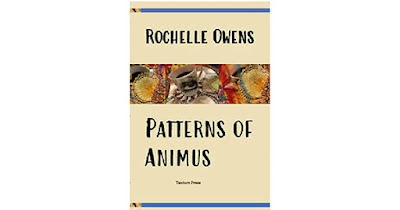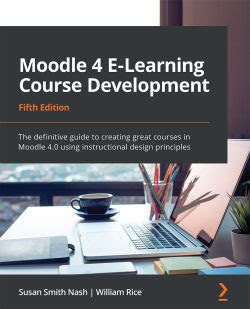How did the philosophical ideas of Humanism reinforce the cultural and scientific revolution of the Renaissance?
See: The Philosophical Foundations of Humanism
During the Middle Ages, Aristotelianism reigned. It was a nice, orderly way of thinking of the world. Everything was in its right place, and there was always balance, equilibrium, and symmetry. Perhaps nowhere was this more evident than in Aristotle’s book, Categories, from his Organon. The Renaissance embraced the structure and symmetry of Aristotle as a way of creating beauty, instead of enforcing order in the world and structure, as it was used in the Middle Ages. The renewed emphasis on the philosophy of the Classics allowed investigation into representation of the phenomenal world, which is to say during the Renaissance, it was now acceptable to explore the natural world, and to ask questions about his forms and functions. Finding new ways to represent the natural world was also encouraged, which meant that the Renaissance brought together art, science, philosophy in new ways. As a result, we see the development of 3-dimensional art on a 2-dimensional canvas (thanks to, for example, linear perspective converging on a vanishing point where there are orthogonals, such as large tiles in the floor in a painting).
Read: Defining Humanism in the Renaissance
Overview: Humanism represented a change of focus. Instead of simply seeking to define the right place of everything within a rigid hierarchy, Renaissance thinkers began to focus on the human being, and human potential for achieving great things, and finding a moment of unity with the good and the beautiful. There was a renewed interest in the philosophical writings of the ancient Greeks, primarily Plato and Aristotle. In addition to exploring the philosophy of the Classics, the Renaissance thinkers also studied their buildings, sculptures, and other works of art.
Foundational Humanism
Petrarch: Considered the key philosophical figure in the Renaissance, Petrarch, who was Italian, was driven by the idea of the quest for the ideal. For Petrarch, there was no conflict between realizing human potential and having religious faith. Petrarch was very interested in the ancient Greeks and Romans, and the classics, not just in terms of art and architecture, but also poetry, philosophy, and lost works. He invented the sonnet form, and he wrote love poems for Laura, although he had very little real contact with her in real life. His poetry and prose championed realism and empirical knowledge.
Giovanni Pico della Mirandola: His “Oration on the Dignity of Man” is considered the Manifesto of the Renaissance. Pico resurrected humanism of ancient Greek philosophy, including Aristotle and Plato. His ideas mainly based on Plato. Through mental struggle, ascends great chain of being towards the angels and communion with God – unity which is very Platonic.
Thomas More: Wrote Utopia, an example of an ideal world which represents humanistic philosophy. In it, each person has a place in society that corresponds with their true nature and abilities, and there is communal ownership of property.
Montaigne: Michel Eyquem de Montaigne, Lord of Montaigne, was one of the most important philosophers of the French Renaissance. His essays were explorations of his own thoughts and attitudes, and he mulled over the prevailing philosophies and reflected upon the novelties of the times, such as the tales of travel in the Americas.
Reformation
Luther: Faith and the Individual
Martin Luther, a German professor, was famous for his “95 Theses” which rested on the main concepts that the Bible is the core authority and that individuals can be saved (achieve salvation) only by faith and not by deeds. The “95 Theses” were published in 1517, and unleashed the Reformation, a religious schism which broke with the Catholic Church and repudiated the pope’s authority, rejected the validity of the sale of indulgences. Instead, he promoted “The Priesthood of All Believers.” Luther was excommunicated in 1521 at the Diet of Worms, after which he used the printing press to create pamphlets that explains the new doctrine.
Calvin: Break Away from Hierarchy
John Calvin, a French Protestant, believed in predestination and the omnipotence of God. Calvin was a stern believer in the power of God’s word and the responsibility of individuals to learn to read the Bible directly and to obey the word of God, without intermediaries (priests, bishops, etc.). The core concept of Calvinism is that God selects those who, through grace, are made capable of believing in God, which is the route to salvation (not deeds, or purchasing indulgences). It was very anti-authoritarian, and was not welcome among the priests, kings, popes, bishops, and others who had benefited from a belief system that gave them privilege, power, and authority.
The Middle Way
Henry VIII, miffed at Pope Clemente’s refusal to annul his marriage to Catherine of Aragon, decided to create a religion that maintained hierarchies and the divine rights of kings, but which eliminated the Pope. That church was The Church of England, and it instantly made enemies of both Protestants (Calvinists, etc.) and Catholics. Henry VIII sought to replace both with his Church of England, and he did so by burning Calvinists at the stake for heresy, and beheading Catholics.
Reflect:
That was impressive! What impresses you most? Please list the first thoughts that you have.
Expand: Machiavelli’s The Prince (1532): The End Justifies the Means
Dedicated to his patron, Lorenzo de Medici, The Prince (1532, but written earlier) contains advice to the prince about how to acquire and maintain power. Much of the focus is on the psychology of the subjects, and so it is often considered a practical guide into the psychology of leadership, and the dynamic between the leader and followers.
Machiavelli first defines principalities, types of armies, and then moves into the character and behavior of the prince. Written in a pragmatic style, with a tone of scientific inquiry, some of the passages seem almost satirical, such as when Machiavelli concludes that it is better for the Prince to be feared than loved by his subjects, better to be cruel than merciful, but is a good idea to launch large projects in order to create a positive reputation. Enormously influential, but not at all an antidote to political hot water, Machiavelli was accused of conspiracy and tortured in 1513.
Later, Machiavelli wrote The Prince as well as historical and literary works. The main point of The Prince is that almost any tactics can be justified in achieving the overall goal (creating a stable princedom), and if the populace is treacherous, then treachery on the part of the leader is justified. The book was condemned by Pope Clement VIII, but nevertheless became widely adopted and studied.
Explore: Scientific Revolution
Francis Bacon: The Scientific Method
Francis Bacon (1561 – 1626) was determined to invent a scientific method based on experimentation rather than parsing scriptures for evidence of natural law. He wanted to bring to light all the things that were previously hidden or unknown, and to do it for the good of humanity. His most important scientific writings were in essence writings in the philosophy of science. His book, “Novum Organum Scientiarum” (The New Scientific Method) lays out procedures for scientific investigation.
Galileo: The World Is Round, Despite Orthodoxy
1543): Born in Poland, Copernicus was an astronomer who developed a celestial model which placed the sun in the middle of the planetary system (instead of Earth at the center). The heliocentric solar system was described in “On the Revolutions of the Heavenly Spheres.” Copernicus was considered heretical by the Roman Catholic Church.
Galileo (1564 – 1642) was convicted of heresy for his belief that the world is not flat, and barely escaped being burned at the stake, although he did spend time in prison. He was most famous for his work in astronomy and math, and his assertion that the Earth is not flat.
Discuss: Similarity and Differences
Discuss the ways in which humanistic philosophy found its way into science, art, literature, and philosophy. What were the similarities and differences across the areas of study?
Check your knowledge Quiz (5 questions):
1. The great patron of the arts in Quattrocento Italy was
a) Giovanni de Medici (correct)
b) Pope Clemente VII
c) Niccolo Machiavelli
d) Pantagruel, as chronicled by Rabelai
2. Machiavelli asserts in The Prince that mercenaries are
a) essential for defense
b) dangerous and can leave one vulnerable (correct)
c) expensive and wasteful
d) useful because they bring new ideas
3) Copernicus devised a heliocentric planetary model which asserted that
a) the moon was at the center, and the “Prince of Tides”
b) the planets have moons, and the moons are sometimes more important than the planets themselves
c) the sun is at the center, and the planets rotate around it (correct)
d) the earth is flat
4) Humanistic thought in the Renaissance includes all except the following:
a) a return to Classical models
b) the human being has infinite possibilities of self-actualization
c) human accomplishment should be celebrated, and it brings together science, literature, politics, architecture, art, and more
d) Literacy is dangerous and all serious works of science, politics, and literature should be written in Latin (correct)
Glossary
Heliocentric planetary system: developed by Copernicus. The planets rotate around the sun.
Reformation: The reaction and reorganization of the church based on Martin Luther’s 95 Theses (written in 1517) which criticizes the Roman Catholic Church.
Quattrocento: The 1400s (15th century) in Italian
Petrarchan sonnet: a sonnet form popularized by Petrarch, consisting of an octave with the rhyme scheme abbaabba and of a sestet with one of several rhyme schemes, as cdecde or cdcdcd
Elizabethan sonnet: a type of sonnet much used by Shakespeare, written in iambic pentameter and consisting of three quatrains and a final couplet with the rhyme scheme abab cdcd efef gg.
Vanishing point: the point at which receding parallel lines viewed in perspective appear to converge
Linear perspective: a type of perspective used by artists in which the relative size, shape, and position of objects are determined by drawn or imagined lines converging at a point on the horizon.
Orthogonal line: A related term, orthogonal projection, describes a method for drawing three-dimensional objects with linear perspective. It refers to perspective lines, drawn diagonally along parallel lines that meet at a so-called "vanishing point." Such perspective lines are orthogonal, or perpendicular to one another.
Key Takeaways
Upon successful completion of this lesson, you will be able to
1. Define humanism in the Renaissance
2. Explain the political philosophy of Machiavelli in The Prince
3. List important works of philosophy in the Renaissance
4. Identify key scientific works in the Renaissance
5. Describe utopian writing in the Renaissance and its impact
Lesson Toolbox
Renaissance Links
Encyclopedia Britannica: Renaissance art and architecture. https://www.britannica.com/event/Renaissance
Metropolitan Museum of Art: Renaissance.
https://www.metmuseum.org/toah/keywords/baroque-art/
History.com: Renaissance Art: http://www.history.com/topics/renaissance-art
Art Institute of Chicago: Arms, Armor, Medieval, and Renaissance http://www.artic.edu/aic/collections/armor
Virtual Uffizi Gallery / Florence. https://plus.google.com/u/0/+UffiziFlorence
Art Museums: Where to see Renaissance Art. https://www.italian-renaissance-art.com/Art-Museums.html
Renaissance Inventions: http://www.inventionware.com/renaissance-inventions/
More, Thomas. Utopia. https://www.gutenberg.org/files/2130/2130-h/2130-h.htm
Machiavelli, Niccolo. The Prince. http://www.gutenberg.org/ebooks/1232
Grotius. The Rights of War and Peace. http://www.gutenberg.org/ebooks/46564
Cortes, Hernan. Letters to Emperor Carlos V. https://archive.org/stream/lettersofcorts01cortuoft/lettersofcorts01cortuoft_djvu.txt
Lope de Vega. Comedias: El remedio en la desdicha; El major alcalde, el rey. http://www.gutenberg.org/ebooks/28408
Calderon de la Barca. La Vida Es Sueño. https://www.gutenberg.org/files/2587/2587-h/2587-h.htm
Garcilaso de la Vega. The works of Garcilaso de la Vega. http://www.gutenberg.org/ebooks/49410
Montaigne, Michel. Essays. http://www.gutenberg.org/files/3600/3600-h/3600-h.htm
Shakespeare, William. The Tempest. http://www.gutenberg.org/ebooks/2235
Petrarch. Sonnets. Triumphs and other Poems. http://www.gutenberg.org/ebooks/17650
Sir Philip Sidney. Astrophel and Stella. https://archive.org/details/sirpshisastroph00sidngoog
-- Susan Smith Nash, Ph.D.













